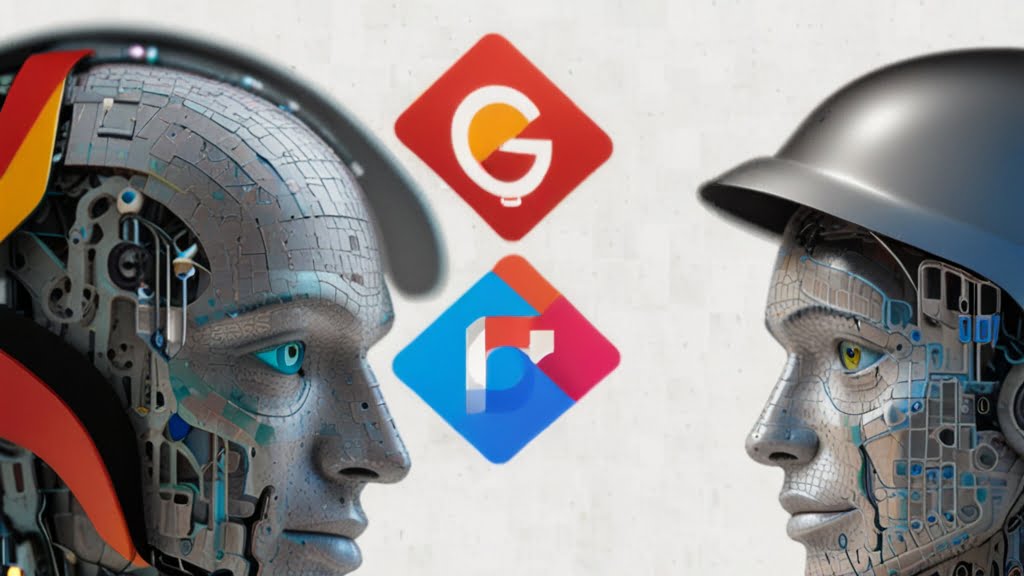The AI Dichotomy: Google and Microsoft

Recently, the tech world was treated to back-to-back showcases of AI innovation, first with Google I/O and then with Microsoft Build. These conferences highlighted the contrasting approaches of two tech giants towards AI integration: Google with a focus on smartphones and Microsoft with a concentration on PCs. This dichotomy raises an essential question: which platform is better suited for AI?
Table of Contents
Google’s Vision: AI in Your Pocket

At Google I/O, the emphasis was on the smartphone as the quintessential AI device. Smartphones, being omnipresent and intimately connected with their users, provide a unique vantage point for AI to learn and adapt. Google’s AI aims to enhance personal life, leveraging the smartphone’s camera and sensors to understand and cater to individual preferences and needs. The demonstrations showcased how AI on smartphones can seamlessly integrate into daily activities, making interactions more intuitive and personalized.
Microsoft’s Strategy: AI at the Desktop

Conversely, Microsoft Build focused on the PC as the ideal platform for AI. PCs are the backbone of professional work, from document creation to gaming. Microsoft’s AI promises to learn from users’ professional habits, improving productivity and efficiency. The keynote emphasized AI’s role in enhancing professional tasks, from drafting documents and creating presentations to assisting in complex software development.
The Need for Integration: Bridging Personal and Professional AI

The reality is that people need AI integration across both personal and professional spheres. AI should be consistent and adaptive, whether interacting with a smartphone or a PC. This highlights a potential future where a competitor might bridge the gap, offering seamless AI experiences across devices. Such an integration would cater to users’ needs holistically, blending personal convenience with professional productivity.
The Role of Qualcomm and Nvidia

Interestingly, the hardware backing Microsoft’s AI push came from Qualcomm for PCs and Nvidia for cloud infrastructure. This collaboration hints at a future where hardware partnerships could be crucial for advancing AI capabilities. If companies like Qualcomm and Nvidia can work together more closely, they could secure a stronger position in the AI landscape, countering the competitive pressures from AMD and Intel.
Quality vs. Performance: A Critical Balance

A significant concern with Microsoft’s approach is the emphasis on performance over quality. The AI industry is pushing for faster and more powerful systems, sometimes at the expense of reliability. This is particularly critical for Microsoft’s tools used in high-stakes environments like software development and engineering. Mistakes in these areas could have far-reaching consequences. Therefore, focusing on improving quality alongside performance is essential to ensure the safe and effective deployment of AI.
AI’s Potential in Enhancing Lives

Microsoft showcased compelling use cases for AI, from aiding the blind to assisting teachers. These applications highlight AI’s potential to make a meaningful impact on daily life. For instance, an AI coach for gaming could help users overcome learning curves, enhancing their gaming experience. Similarly, AI tools integrated into Office 365 can streamline tasks, making professional work more efficient.
Rethinking AI’s Purpose

Ultimately, the current trajectory of AI development is skewed towards increasing productivity. However, there’s a compelling argument for refocusing AI on improving the quality of life. AI could help avoid life-altering mistakes, assist in making better decisions, and enhance overall well-being. This shift from productivity to quality could ensure that AI truly benefits humanity.
Conclusion: Collaborative AI Future
The divergent approaches of Google and Microsoft reflect different visions for AI’s role in our lives. Both platforms have unique advantages, but the future may lie in a collaborative approach that integrates the strengths of both. By focusing on quality and meaningful improvements in life, AI can achieve its full potential, creating a better, more balanced future for all.
